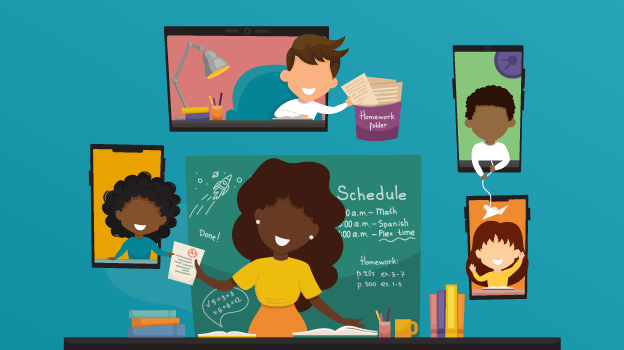
10 Online learning tips in times of disasters
Humanity has gone through many hard times, from world wars to natural disasters to pervasive pandemics. We are currently witnessing challenging times in terms of global health, with every industry affected in one way or another by an invisible threat.
Airplanes don’t fly anymore, many shops and factories have closed their doors — and so did schools. Those who could, moved their activity online.
Schools may be closed, but education must continue. Students need to learn, even in times of disasters.
Disaster-proof education is a movement that seeks to empower teachers and students in these difficult times by providing a strategy that uses the most at hand solution: education technology.
The movement was created by Jenielyn Padernal, a passionate educator and instructional design expert with more than 20 years of experience in the field.
Here are some online learning tips that Jen has developed over the years as a disaster-proof educator, and which any teacher around the world can use to move their classroom activities online:
Tip #1. Adopt an asynchronous mindset
Online learning does not always have to be synchronously done. Give students ample time to read and learn, and this will also give teachers time to reflect and check.
Tip #2. Don’t try to do it all
Don’t overwhelm your students with too many online assignments and activities. Remember, one student can have as many as eight to ten subjects. Take note that this can also overwhelm you as an instructor when checking and marking those activities - if you are handling several sections of students. Quality is better than quantity.
Tip #3. Don’t panic
Upload lessons and activities one at a time. You have enough time to give lessons and activities. There is no need to give everything in one day. Keep calm.
Tip #4. Sharing is caring
Share lessons and activities that are common to teachers. It lessens the burden of creating the same lesson by different teachers for different groups of learners.
Tip #5. Help each other
Open lines of communication where teachers and students can reach out to each other if they encounter any issues or challenges. Reach out to your LMS support forum. Ranting never helps.
Tip #6. Less is more
Create bite-sized lessons and activities. Shorter lessons are easier to digest and to absorb. It also reduces cognitive load among learners. Your students will appreciate this.
Tip #7. Edutainment helps
Use videos and colorful images to break the monotony of text-heavy content. Use your phone or an easy-to-use recording app to record yourself teaching a specific topic, but make it short and sweet.
Tip #8. Gamify
You can also gamify lessons and activities by awarding points and badges for the progress the student makes. Students get excited when they see their names in a leaderboard.
Tip #9. Collaborate
Use different collaboration tools such as chats, wikis, discussion forums, and blogs, that allow students to communicate and engage with each other. Teaching doesn’t have to be for teachers only. Let them learn from each other.
Tip #10. Give them time
Let the learners work at their own pace. We are no longer in the classroom where time is of the essence because of class schedules. They have nowhere else to go and nothing else to do anyway. Us teachers need time to pause and rest as well.
Follow Jen on Twitter at @jen_padernal and @DsasterProofEd
Check the Disaster-Proof Education Facebook page https://www.facebook.com/DisasterProofEd/
Visit our Blog for insightful posts on edtech for K-12 and Higher Ed.







